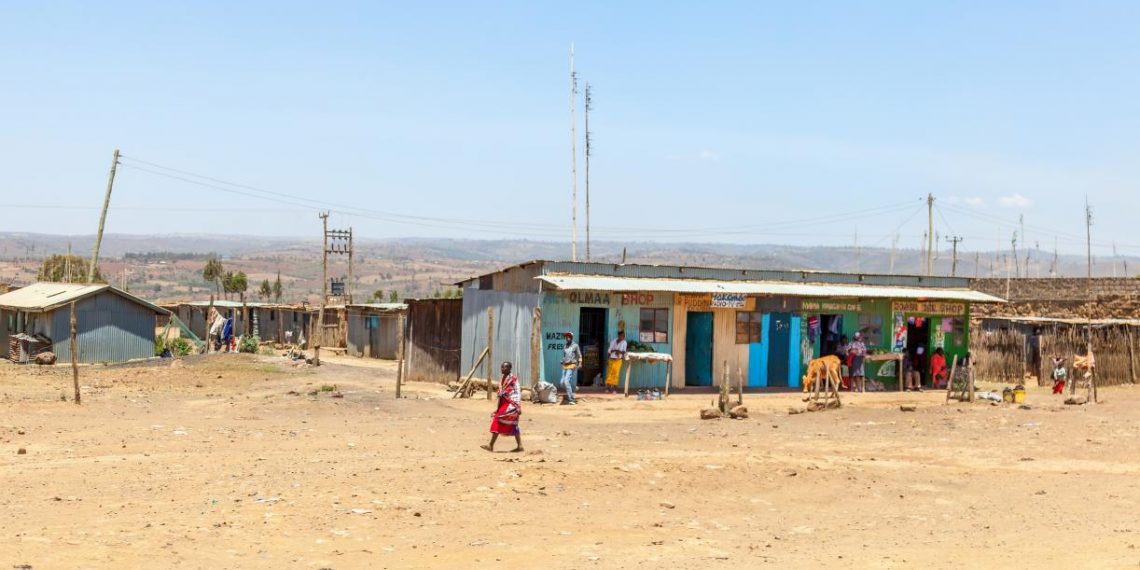Kenya has made significant progress towards universal electrification. Since 2010, access to electricity has increased by more than 7% annually across the country.
This significant milestone is largely thanks to the country’s National Electrification Strategy and the use of integrated approaches, including both the expansion of grid infrastructure and off-grid solar home systems. According to Kenya Census data, while grid-powered homes grew steadily from 16% in 2005 to 50.4% in 2019, solar-powered homes also tracked considerable growth, increasing from about 2% to 19% during the same period.
Source based on KNBS 2009 & 2019, KIHBS 2005 & 2015.
At a national level, these advances are encouraging; however, progress varies across the country. As required by Kenya’s national Energy Act of 2019, all the country’s 47 counties are mandated to develop their own energy plans. If done well, these plans can help bring reliable, affordable electricity to the millions of Kenyans still without power.
Yet most counties lack the necessary capacity and geospatial data and technology to develop such plans. WRI’s Energy Access Explorer combines recent census data and high-resolution geospatial information, enabling stakeholders to draw insights on the current state of electricity access to inform their energy plans moving forward.
Looking at Kenya’s electricity evolution over the past several years can help inform what energy planners do next. Here’s what we know:
- Grid and distributed renewable energy are complementary strategies for governments to consider – as has been done in Kenya.
- The price of solar home systems in these applications is lower than the cost of grid-based electricity. From a policy and consumer standpoint, it also offers advantages.
- Data and tools available to policymakers can help look at the demographic characteristics of the population at a subnational level and overlay the current infrastructure and resource availability to help target energy poverty alleviation efforts.
These opportunities and actions are apparent in reviewing the data, as demonstrated by the Energy Access Explorer, a tool that can support integrated energy planning to optimize grid extension and distributed renewable energy strategies.
1. Many counties underserved by the grid have the highest proportion of solar-powered homes.
Households in the 10 counties with the highest penetration of solar home systems use less grid power than the national rural average. Many of these counties are concentrated in western Kenya – an area with many “under-grid households,” meaning that households are close to the grid, but not connected.
Source based on KNBS, 2019.
Source: Energy Access Explorer based on KNBS 2019 / Energy Access Explorer
The data in these 10 counties shows how solar home systems can play a key role in providing power in areas with no, limited, unreliable or costly grid power.
2. Solar home systems are an accessible option among Kenya’s counties with medium-to-high levels of poverty.
The 10 counties with the highest number of solar home systems are in areas where at least 50% of the population experiences poverty. In these areas, solar is often the most affordable energy option.
This could be driven by a number of variables, including an historical cost reduction of solar panels and batteries — two main components of solar home systems. More importantly, solar home systems are often paired with energy-efficient appliances (LED lighting, mobile phone chargers, radios, etc.), and are sized and customized for household energy needs. The energy needs of some Kenyan households could be fully met by solar home systems, alleviating the need for expensive grid infrastructure.
Source: Energy Access Explorer
3. Counties with low electricity access have high solar potential.
According to 2019 census data, seven counties in northern Kenya experience both a low adoption of solar home systems and the grid. This is an indication that homes in these counties have poor access to electricity.
Nearly 94% of the total population in these underserved counties live in areas with a high poverty rate1, but they also have some of the highest solar potential in Kenya2 . Extending the grid in these areas would be costly, making smaller solar home systems a more promising option to expand energy access. It is noteworthy that all these counties are part of the Kenya Off-Grid Solar Access Project (KOSAP), which aims to provide electricity to parts of the country that are not served by the national grid.3
Expanding Energy Access in Kenya’s Hardest-to-Reach Places
Geospatial data on demographics, socio-economic activities, energy resource availability, power infrastructure, environment, access to finance, and more can play a key role in building more inclusive energy plans, while also accounting for critical development outcomes across Kenya. Energy Access Explorer aggregates these often-siloed geospatial data and provides simple-to-use, customizable analysis to prioritize areas of interest.
EAE is already being used by energy planners to support inclusive energy planning in Kenya‘s Kitui and Narok counties. This data-driven, integrated approach can be scaled to new geographies with minimal resources, thanks to the open source and fully adaptable nature of the Energy Access Explorer.
In 2021, as governments seek to re-invest in poverty alleviation efforts in response to COVID-19 and ongoing wealth disparities, ending energy poverty must be prioritized. Geospatial tools can support a new generation of integrated energy planning efforts. Kenya’s approach – as demonstrated here – offers a pathway for other countries to follow as they work to accelerate energy access.
Photo Credit: TTphoto/Shutterstock
1Percentage in poverty [Multidimensional Poverty Index] above 70%
2Global Horizontal Irradiation above 1,800 (kWh/m2)
3Jointly implemented by the Ministry of Energy, the Kenya Power and Lighting Company (KPLC) and the Rural Electrification Agency (REA).


